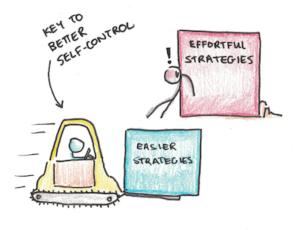If you’ve ever used a piece of cardio equipment, a heart rate monitor, or attended a group class that tracks your heart rate you’ve probably noticed that they make use of a colorful chart known as the heart rate zones. This chart references different heart rate ranges that you can make use of in your workouts. More often than not, one of those zones is labeled as the “fat-burning zone” which basically tells you that by staying between these heart rate ranges you’ll achieve max fat burn.
Sounds simple enough, it almost makes you wonder, “why doesn’t everyone trying to lose weight just train in the fat-burning zone all the time?”
Of course, burning fat is a little more complicated than that, but where did the idea of a “fat-burning zone” even come from? And is it actually something that has merit or is just some marketing ploy?
The Heart Rate Zones
Your heart rate is the most accurate gauge of measuring the intensity of your training. For most people, their heart beats between 60-100 times per minute while at rest (lower resting heart rate generally refers to a healthier heart). As you train, your heart rate will elevate. The harder the training, the higher your heart rate.
Your heart can only beat so many times in a minute though. The maximum number of times your heart should beat during exercise is referred to as your maximum heart rate. You can find a pretty accurate estimate of what your maximum heart rate is by using this formula:
Maximum Heart Rate = 220 – Your Age
For example, if you’re a 35-year-old woman, you can find your maximum heart rate by subtracting 35 from 220, giving you a maximum heart rate of 185 beats per minute.
Below, you’ll see the colorful chart I was referring to earlier. As you can see, the notorious fat burning zone falls between 60-70% of your max heart rate. This means that our 35-year-old woman from earlier will need to be between 115-130 beats per minute while training to be in the fat loss zone.

So, we know the theory now, but how does your heart determine whether or not you use your fat as fuel in the first place?
How Your Body Burns Fat
Everything you do requires energy (calories) to get done. From training to walking, or even just existing! Your body is constantly working to turn both carbs and fats into energy for your cells to use. The production of energy is constant but the dominant energy source being used will vary depending on a few variables.
In most cases, the body will resort to what’s most readily available. If you’re someone that is on a keto diet, you likely won’t use carbs for fuel because you don’t eat carbs (this doesn’t mean keto is better at burning body fat though). Likewise, if you’re on a high carb diet, your body will use the carbs for fuel because it’s most abundant in your system. Your body is a super-intelligent machine and is always looking for the most efficient way to operate.
However, even though your body adapts to what’s given to it, it still has a default process it likes to work through.
Why It’s Called The Fat Burning Zone
Our cells convert carbs or fat to a usable form of energy known as adenosine triphosphate (ATP). Whether our body uses carbs or fat to create ATP depends on our level of activity, diet, and hormones – but we’ll focus on the level of activity here.
This is because our cells need oxygen to turn fat into ATP. When we’re at rest and breathing at our normal rate, oxygen is readily available and we can metabolize fat at a slow and steady pace. This is also true for less intense activities aka activities that keep us at 55-70% of our max heart rate. So when you’re doing these low-intensity activities your main fuel source is fat.
When you train more intensely, there isn’t enough oxygen to keep up with the energy demanded to do the activity. Your body tries to keep up by breathing heavier and faster to get as much oxygen as it can but it’s still not as abundant as needed. This is when your body will turn to use more carbs to fuel the activity being done. As the intensity continues to increase, the demand for carbs as fuel grows higher and higher.
No matter the intensity though, your body never stops using fat as fuel! It just starts to use more carbs to keep up with the energy demands you’re asking of it.
Does The Fat-Burning Zone Really Burn More Fat Though?
The big question we’ve all been waiting to answer!
As we concluded earlier, in lower intensity exercises higher percent of the calories you burn come from fats. This is why it’s known as the fat-burning zone. As intensity increases, more carbs are used as fuel to keep up with the calories needed to do the activity. This leads to a lower percentage of calories burned to come from fat – but fat still gets used.
All this talk of percentages though doesn’t actually tell us how many calories we’re actually burning from fat or carbs! That’s where the myth comes into play.
With higher intensity activity, you burn more total calories than you would with lower intensity activity. I think we can all agree on that. Even though a higher percentage of calories come from fat with lower intensity activities – a higher amount of calories of fat are burned with higher intensity activities. The table below breaks down this relationship in an easier to understand way:

So while you might burn a greater percentage of fat calories in the “fat loss zone” you burn more total fat calories while training in higher intensities.
Conclusion
Even though we established that higher intensity activities burn more fat than lower intensity activities, this isn’t a green light to go do circuit classes for hours on end. Too much high-intensity activity can have a negative impact on your joints, hormones, and metabolic health. A balance of both higher and lower intensity is going to be optimal for sustained and healthy fat loss. Of course, it’s always important to remember that no amount of activity will negate poor eating habits and a lack of consistency! If you’re struggling with finding the right balance of intensity in your training then schedule a free strategy call with one of our coaches to help get you on the right path today!
References:
1) Kirk, E.P., et al. 2009. Minimal resistance training improves daily energy expenditure and fat oxidation. Medicine & Science in Sports & Exercise, 41 (5), 1122–29.
2) Miller, M.B., et al. 2014. The effect of a short-term high-intensity circuit training program on work capacity, body composition, and blood profiles in sedentary obese men: A pilot study. Biomed Research International. doi: 1155/2014/191797.
3) Mukaimoto, T., & Ohno, M. 2012. Effects of circuit low-intensity resistance exercise with slow movement on oxygen consumption during and after exercise, Journal of Sports Sciences, 30 (1), 79–90.
4) https://bcmj.org/articles/science-exercise-prescription-martti-karvonen-and-his-contributions







